by Andrew Mease
Photographer Andrew Mease explains this new trend, how it works, and what he learned from becoming an NFT artist.
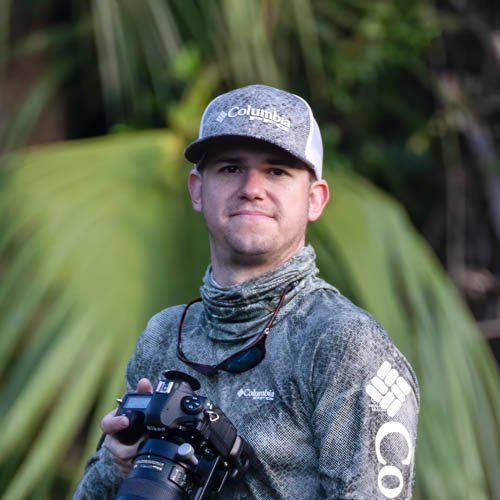
Florida photographer and NFT artist Andrew Mease.
I am a fine art photographer in South Florida, specializing in the diverse and exotic landscapes and wildlife in this tropical region. My greatest interest is capturing photos of birds, and most especially owls, while educating the public on our ecosystems and the wildlife that inhabit them. I’ve also had a long-term fascination with technology. At an early age I was building computers, programming them, working in Photoshop and gaming. This eventually led to my work as a digital artist, and my interest in learning more about NFTs and the growing market for this type of art.
What are NFTs?
Non-fungible tokens are units of data stored on a digital ledger called a blockchain. Blockchain is a decentralized system of recording that is permanent and transparent; it certifies a digital asset to be unique, and establishes a true record of ownership. What does that mean in simple terms? These bits of data allow artists to create, enhance and sell art in a new form online that has value and appeal to art collectors. It’s a huge trend that is growing and will become mainstream over time.
NFTs can take the form of digital art, music, virtual real estate, gaming assets, videos, and more. They can even act as “tokenized” real world assets and be sold to collectors through online marketplaces. There are many platforms where NFTs are sold, but I’ve been active on Opensea, Rarible and Foundation. These marketplaces use blockchain technology to transact, deliver and track ownership of digital assets, which are benefits of owning NFTs. The collector gets to own a unique work of art that may increase in value. NFTs can also be resold to other collectors.
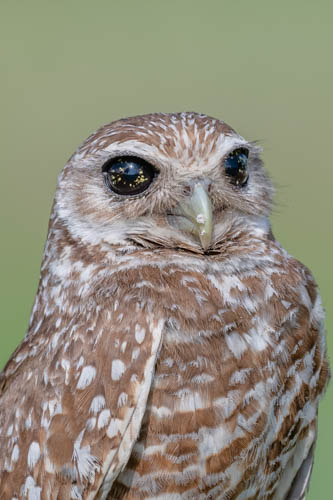
“Starlord” was minted in an edition of 100 NFTs gifted as an airdrop in a competition. The image also sold for .05 $ETH
There are specific benefits of selling NFTs vs. traditional artwork, including:
- Royalties: Artists automatically collect royalties on secondary market sales, currently a top driver in bringing artists to the space. Royalties provide residual income over time through resales for the artist without having to create, release, or sell new artwork.
- Instant delivery: Immediate transfer to the buyer upon purchase avoids the costs and hassle of packing and shipping.
- Airdrops: NFTs can easily be sent as gifts to loyal customers in the form of “airdrops” to wallet addresses.
- Provenance: Track primary and secondary sales, identify and build relationships with your collectors.
- Audience growth: Increased awareness through NFT marketing channels can lead to additional sales of art in traditional formats.
- Immutable: Stored forever on the blockchain, NFTs can be passed down through generations over time.
- Global Exposure: Artists and collectors aren’t limited by physical spaces to store or display digital artwork NFTs. Some people have built galleries to display their #NFT artworks in Virtual worlds such as Decentraland, Somnium Space, Cryptovoxels, and The Sandbox.
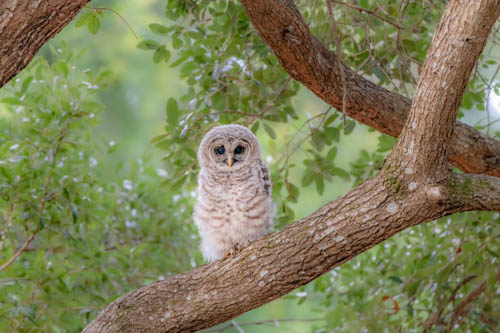
“Barred Brancher” was the first piece of art Mease selected to sell as a digital NFT in jpg format.
Creating an NFT
There’s a lot to learn about NFTs, blockchain and the future of the digital art market, and artists who want to get involved should do their research. When I got started, “Barred Brancher” was the first piece of art I selected to sell as a digital NFT artwork. I uploaded the image in jpg format and listed it on Opensea. That platform allows large files up to 100MB in file size, which is perfect for showing off all of the detail in my high resolution work.
I include the story behind the photo in addition to the camera settings and the software I used for post production in the description area. The final touch I like to add is unlockable content. My NFTs include a link to my Google Drive, which contains a full resolution version of the NFT for buyers to download and use as they please. I give my collectors full commercial use rights as long as they own the work, which adds even more value to my art.
Listing an NFT for sale
Artists have the ability to select a fixed “buy it now” price or an auction. My listings so far have been offered as single NFTs, but multiple NFTs can be bundled together for sale on Opensea. (Other websites like Foundation allow the artist to set a reserve price and move to a 24 hour auction once the reserve price is met.) One of the things I love about Opensea is that I pay only a 2.5% commission and no other fees. Foundation collects a 15% commission fee on primary sales and 5% on secondary sales.
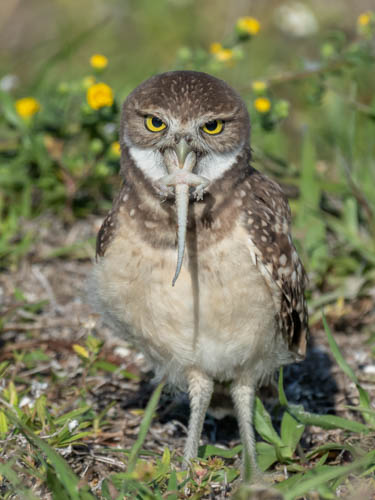
This surprising NFT image of a burrowing owl eating a gecko was used by Mease as a giveaway in a guerilla marketing campaign.
Marketing and Selling NFTs
After I mint a new art piece, I immediately start to spread the word through marketing channels and social media like Twitter and Discord. Once my NFT sells, I reach out and thank the buyer, taking advantage of an excellent opportunity to build rapport and a relationship with my customer. This extra touch may be the magic that turns a first-time buyer into a big supporter and repeat collector. I’ve noticed that NFT sales have increased sales of my physical work, with buyers purchasing prints as well as digital art.
And as a buyer of NFTs myself, I appreciate having conversations with the artist before and after making the purchase. I want to know who they are as an artist and the story behind the artwork I’m purchasing.
What I learned from my NFT experience
At the very beginning of my NFT creative journey, I minted too many copies of my NFTs. This would have most likely devalued my work in the long run. Luckily, I quickly discovered my mistake and I was able to delete and burn most of my original mints so I could mint my work again in lower quantities. Typically, the rarer something is, the higher the value it commands. Once I was accepted as a creator on Foundation, my focus shifted to making all of my artwork more rare as time goes on. I will be minting more of my artwork as Genesis 1/1 pieces.
When you get started, plan a sales strategy before minting and have a roadmap laid out. NFTs take time to sell, so don’t saturate the market too quickly in the beginning. Be thoughtful about which NFTs you start with, selecting those you feel are most saleable. This allows you to mint more pieces without flooding the market.
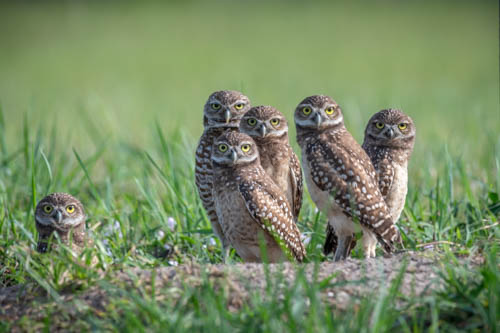
Andrew Mease’s bestselling image of a family of six burrowing owls was minted in an NFT edition of 10 priced at .3 $ETH
The process of selling NFTs for an artist of any level can be a humbling experience. Sales take time. They grow through forming relationships, no matter which platform or medium you choose. Someone may need to see your work or speak with you five or six times before their initial purchase. This illustrates the importance of networking, and being a part of a community.
It can help to research your customers’ NFT collections on marketplace platforms to see what they value and spend money on. Be sure to engage regularly on social media and join NFT communities. That gives you the chance to make friends and learn more about this new trending market, which is constantly changing. It is still early days for NFTs as they head towards mainstream adoption, but you can start now by learning the process, minting your first NFT and becoming part of this fascinating new world of art.



I was offered a licensing contract recently and asked to upload extremely large files for the product being licensed (which was no larger than 10ins) and have to admit I wondered how artists can protect themselves over those who could take advantage of gaining large files from artists and using them for NFT’s without the artist knowing (I’ve had files misused before).
Hello Claire, it sounds like maybe you are being compensated for these files? If so, what services, files, timelines, you choose to provide for pay is completely up to you… As an artist, I am constantly aware of what quality of files I put out into the world and who may have access to those files. I only provide the minimum needed for my works when providing them to publications, websites, and other organizations to protect my work. My website does not allow for people to right click and save photos easily, to more easily deter people stealing or trying to use my work as their own. I would recommend researching contracts and copyrights for digital artwork to what rights you have as an artist for your work. This year, I have chosen to sell my artwork as #NFTs and digital assets on the blockchain. I include commercial rights and full resolution files to my buyers as an added value to my product (files are accessible after their purchase). My files cannot be right clicked and saved in high detail directly from the #NFT marketplace. I also use Decentraland, Somnium spaces, and other metaverses to display virtual galleries of my art work in high detail without anyone being able to easy steal them. This is just my new personal preference as an artist for my artwork. I held a derivative contest where i gave out 100 of my #NFTs and invited those recipients to use my NFT and use their creativity to create a unique piece of their own. I held a live event in Decentraland with over 100 attendees. It gave the creators exposure for their artwork, and it boosted my exposure as well… plus I ended up with some really cool art pieces for my own personal art collection from a variety of artists as gifts afterwards.
Hello Andrew, thank you so much for this reply, it has given me (and hopefully others reading) much food for thought and more insight into this new form of selling our art and images.
The live event is a super idea and sounds like everyone enjoyed the experience!
I am so glad that you had some takeaways from my article. The space is constantly changing, so try different things and see what works for you!
Getting bombarded by scammers on Facebook groups
Never sold an NfT of my digital paintings derived from my photographic files. Am wary of minting fees and gas fees paid upfront. Polygon collects those fees upon sale.
My digital paintings are posted on Instagram: stevetohari
Over 150. Check them out, like nothing you have ever seen. Getting lots of likes on Facebook groups, less on invisible Instagram I don’t promote…
Website: stevetohariart.mystrikingly.com
Steve, Thanks for your comment. Regarding being bombarded by scammers on social media, you may want to check our article on the topic: https://www.artsyshark.com/2023/09/20/dont-fall-for-nft-scams/